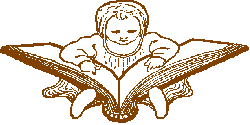
PSYCHOHISTORY
Articles & Texts
[Books texts] [Journal Articles] [Charts] [Prenatal]
[Trauma Model] [Cultic] [Web links] [Cartoons] [Other]
 |
Digital
Archive of PSYCHOHISTORY Articles & Texts [Books texts] [Journal Articles] [Charts] [Prenatal] [Trauma Model] [Cultic] [Web links] [Cartoons] [Other] |
The evolution of childhood from incest to love and from abuse to empathy has been a slow, uneven path, but one whose progressive direction is, I think, unmistakable. This evolution of parent-child relations is, I contend, an independent source of historical change, lying in the ability of successive generations of parents to live through their own childhood traumas a second time and work through their anxieties in a slightly better manner this second time around.
It is in this sense that I say that history is like psychotherapy, which also heals through revisiting one's childhood traumas and reworking earlier anxieties. If the parent -- the mother, for most of history -- iss given even the most minimal support by society, this evolution of childrearing progresses, new variations in historical personality are formed, and history begins to move in new, more innovative directions.
The crucial relationship in this evolution is the mother-daughter relationship. If little girls are treated particularly badly, they grow up to be mothers who cannot rework their traumas, and history is frozen. For instance, although China was ahead of the West in most ways during the pre-Christian era, it became "frozen" and fell far behind the West in evolutionary social change after it adopted the practice of footbinding girls. Similarly, the clitoridectomy of girls in Moslem societies has inhibited their social development for centuries, since it likewise puts a brake on the ability of mothers to make progress in caring for their children. Clearly, different groups have moved different distances up the ladder of psychological evolution, since some contemporary groups still practice brain-eating as our Paleolithic ancestors did, and different subgroups of our more advanced nations still terrorize and abuse their children in ways identical to those that were commonplace centuries ago, producing the "historical fossils" we now call borderline personalities and other severe character disorders.
The "generational pressure" for psychological change is not only an independent historical force -- originating in inborn adult-child striving for relationship -- it occurs independent of social and technological change, and can be found even in periods of economic stagnation. My "psychogenic theory of history" posits an evolutionary historical tendency to move from need to love and from symbiosis to individuation, with new variations of historical personalities selected by local environmental conditions. This theory suggests that a society's childrearing practices are not just one item in a list of cultural traits, but--because all other traits must be passed down from generation to generation through the narrow funnel of childhood -- actually makes childrearing the very basis for the transmission and development of all other cultural traits, placing definite limits on what can be achieved in the material spheres of history.
Regardless of the changes in the environment, it is only when changes in childhood occur that societies begin to progress and move in unpredictable new directions that are more adaptive.
That more individuated and loving individuals are ultimately more adaptive is understandable -- because they are less under the pressures of infantile needs and are therefore more rational in reaching their goals.
But that this childhood evolution -- and therefore social evolution -- is terribly uneven is also understandable, given the varying conditions under which parents all over the world have to conduct their childrearing tasks.
 |
Digital
Archive of PSYCHOHISTORY Articles & Texts [Books texts] [Journal Articles] [Charts] [Prenatal] [Trauma Model] [Cultic] [Web links] [Cartoons] [Other] |